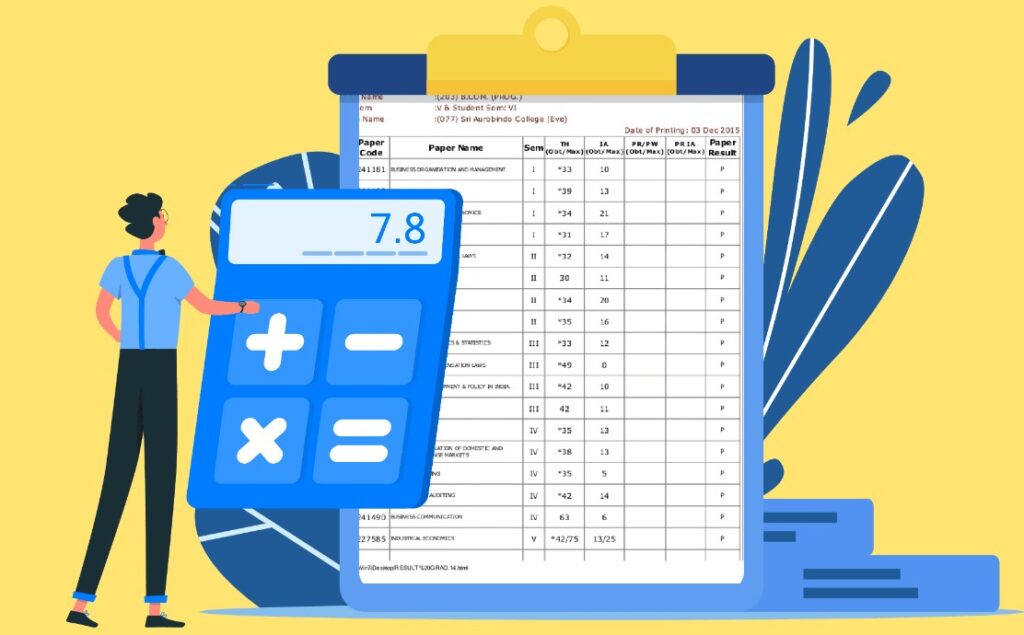Grading tests is an essential task for teachers, but it can be time-consuming and challenging, especially when faced with large class sizes or multiple assignments to assess. Manual grading, with its inherent potential for human error, can overwhelm educators and detract from valuable instructional time.
However, there is a solution at hand ─ test-grade calculators. These innovative tools have the power to revolutionize the grading process, bringing efficiency and accuracy to the forefront.
In this comprehensive guide, we will delve into the benefits of using test grade calculators, explore key considerations for choosing the right one that aligns with your unique needs, and provide practical tips for seamless integration into your grading workflow.
Prepare to embrace a new era of streamlined grading that empowers both teachers and students alike.
Understanding Test Grade Calculators
Test grade calculators are digital tools that automate grading and calculating final grades. They save time and improve accuracy by eliminating manual calculations, freeing up valuable hours for teachers to focus on other essential aspects of their profession.
These tools offer consistency in evaluation, ensuring fair assessments and reducing biases that can inadvertently creep into manual grading processes. Additionally, these calculators provide instant feedback to students, empowering them to actively participate in their own learning journeys by tracking their progress and identifying specific areas for improvement.
With a wide range of grade calculators available, educators can choose the one that best suits their unique educational contexts, accommodating diverse grading systems and assessment criteria.
Choosing the Right Test Grade Calculator

Source: edutopia.org
When selecting a suitable test grade calculator, it is essential to consider customization options and integration capabilities. Customization empowers teachers to personalize the tool according to their specific requirements, enabling them to adjust grading rubrics, assign weights to different assessments, and fine-tune various settings.
This flexibility ensures that the calculator aligns perfectly with the teacher’s unique grading approach. Additionally, integration with learning management systems (LMS) enhances efficiency by allowing seamless transfer of grades, saving valuable time and reducing administrative burdens.
To make an informed decision, it is beneficial to seek recommendations from fellow educators and read reviews to gain insights into the user experiences and functionalities of different grade calculator tools. Notable options that often receive positive feedback include grade-assistant.com and similar platforms, which have proven track records in supporting teachers with their grading processes.
Streamlining the Grading Process
Test grade calculators streamline grading by automating the process. They save time and effort, allowing teachers to focus on analyzing student performance, providing feedback, and developing effective teaching strategies.
Automated grading eliminates manual calculations, reducing errors and ensuring accuracy. Integrating grade calculators into the workflow requires practical tips to maximize efficiency. Teachers can establish a grading routine, familiarize themselves with the tool’s features, and leverage shortcuts and templates for faster grading.
Ensuring Accuracy in Grading
Accuracy is crucial in test grading, as it directly affects the fairness and reliability of assessment results. These calculators serve as invaluable allies in this pursuit by effectively eliminating human error and enhancing precision.
These automated tools meticulously adhere to predefined criteria and uniformly apply them to every student’s responses, guaranteeing consistency throughout the grading process. To ensure optimal accuracy, teachers must set up grade calculators accurately by carefully defining grading rubrics and assigning appropriate point values to different question types.
Additionally, it is essential to develop a habit of regularly reviewing and double-checking calculations performed by the calculator, thus instilling confidence in the accuracy of the final grades assigned to students.
Customization and Flexibility

Source: leverageedu.com
Customization options in grade calculators are essential for tailoring the tool to individual needs. Teachers can define grading criteria, weight assignments or categories, and adjust settings to match their classroom requirements.
Customization allows for personalized grading approaches that align with specific teaching methodologies. Some of these calculators offer additional features like color coding, progress tracking, or different grading scales, providing flexibility for diverse grading needs.
Managing Data
Grade calculators help manage and organize grade data effectively. Digital record-keeping eliminates the need for manual grade books and reduces the risk of losing or misplacing records. Storing results digitally also enables easy access and retrieval when needed.
Teachers can leverage grade calculator data for insights and analysis by tracking student performance over time, identifying trends, and identifying areas of improvement.
Enhancing Communication with Students and Parents
Grade calculators facilitate better communication between teachers, students, and parents. Some calculators offer various portals or online platforms where students and parents can access grades and track progress.
These features promote transparency and allow for timely feedback and discussions. Teachers can utilize grade portals to share feedback, provide additional resources, or set goals for improvement.
Overcoming Potential Challenges

Source: leverageedu.com
Using grade calculators may come with challenges such as technical difficulties or a learning curve. However, teachers can overcome these challenges by seeking support from the calculator’s dedicated customer service team, accessing online tutorials and guides specifically tailored for educators, or joining vibrant educator communities for advice and troubleshooting.
Remember, it’s crucial to remain patient and give yourself ample time to familiarize yourself with the tool’s functionalities to reap its full benefits.
Incorporating Feedback and Improvement
Grade calculators can be used for providing timely feedback to students, revolutionizing the way educators assess and guide their students’ learning journeys. With instant grading and feedback features, teachers can effortlessly identify strengths and weaknesses in student performance, enabling them to deliver constructive feedback promptly.
By leveraging the calculators, teachers can offer specific insights into individual student progress, pinpoint areas for growth, and encourage student engagement by fostering a sense of ownership in their learning process.
Conclusion
Using test grade calculators improves efficiency and accuracy in the grading process, enabling teachers to devote more time to effective teaching. These powerful tools not only save time by automating the grading process, but they also eliminate errors, ensuring fair and consistent evaluations.
Moreover, grade calculators offer valuable insights into student performance, allowing educators to identify strengths and areas for improvement. By choosing the right one, streamlining grading procedures, ensuring accuracy, and leveraging customization options, teachers can optimize their workflow and create a more productive learning environment.
Embrace the power of test grade calculators and transform your grading experience today!























